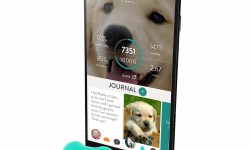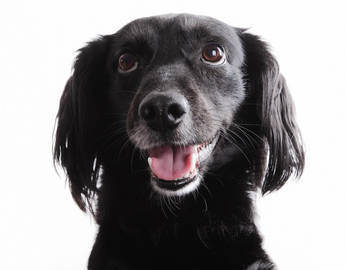Impact of pandemic on Pet Adoption / Pet Ownership
Increased numbers of people have adopted or bought new pets to help get them through the Covid-19 pandemic lockdowns and restrictions, including many newly working from home.
With the vaccine roll-out underway, many of these will be going back to the workplace, either on a full or part-time basis.
It’s really important to be aware that, as we begin the return to “normal” work routines, commuting etc., some dogs will suffer separation anxiety, which can include becoming upset and/or extremely stressed at their human’s absence.
Now is the time to start preparing to help alleviate the trauma that this changed routine may bring for your dog.
Always remember the first rule of Dog Training
Be patient and use positive reinforcement!
If you come home to find your dog has done something, the advice from Ireland's largest dog welfare charity Dogs Trust, is that punishing him on your return for anything that he may have done in your absence will only increase the amount of anxiety and confusion that he feels when you leave him, and make the problem far worse.
What is Separation Anxiety?
Separation anxiety can manifest itself in many ways
Symptoms of distress caused by Separation Anxiety can vary greatly, and may include Urinating and Defecating, Barking or Howling, Chewing, Digging, Destructive Behaviour, Pacing, and Escaping.
The ASPCA warns that escape attempts by dogs with separation anxiety are often extreme and can result in self-injury and household destruction, especially around exit points like windows and doors.
Note: If your dog urinates or defecates in your presence, this probably isn’t caused by separation anxiety. Similarly, if your dog’s chewing, digging and destruction are caused by separation anxiety, they don’t usually occur when you are present.
Has your dog been socialised?
Socialising and training your dog properly - ideally at a young age - is a big step in building your dog’s confidence. Socialisation is not just about meeting other dogs in the park; it’s also about building your dog’s confidence around unfamiliar people, places, smells, and everyday sounds / noises.
Bottom line: a well-trained and socialised dog is a happier dog with better life outcomes.
Training also helps strengthen the two-way trust and bond between your dog and you.
Treating / Dealing with Separation Anxiety
An important part of dealing with separation anxiety in dogs is helping build their independence and confidence, so they can better cope with being left alone.
Recommendations for dealing with Separation Anxiety by the RSPCA, the UK's Largest Animal Welfare Charity, include:
Encouraging your pet to relax while you are away
Try to take your dog for a walk before you are due to go out so that they have the opportunity to go to the toilet and exercise. Return half an hour before you plan to leave and feed them a small meal - your dog will be much more inclined to relax!
Minimising disturbances
Some dogs will bark at the sight of other people or dogs passing by their window or in response to noises outside the home. Closing the curtains to reduce what your dog can see outside, leaving them in a quieter room or leaving the radio on to muffle outside noise can prevent your dog from being disturbed and barking.
Mild vs Severe Separation Anxiety
The experts at PetMD.com identify two levels of anxiety, with recommendations based on the severity level.
They note that dog’s reactions can range from mild distress, like pacing and whining, to extreme anxiety, resulting in dogs that injure themselves when attempting to escape confinement.
Dealing with Mild Separation Anxiety
Dogs exhibiting mild separation distress might benefit from the following interventions:
Exercise: Increasing your dog’s daily workout might help her to relax when alone. Taking longer walks to new places, playing together or working on training will help mentally exhaust your dog prior to your departure from the home.
A good way to do this is to combine both your exercise routines e.g. by going for a run together - before you head off to work.
Interactive toys: Encouraging your dog to focus on a treat-stuffed toy when you aren’t present might help to calm a dog with basic separation intolerance.
Dealing with Severe Separation Anxiety
Addressing intense separation anxiety requires a gradual and systematic approach towards building your dog’s confidence, a few seconds at a time, to prevent stress reactions, and must progress at your dog’s pace.
It might include leaving your pet for a few minutes at a time and then increasing the duration slowly over time. You can start by going to the next room and then progress to going just outside the home, using tasty training treats and praise as positive reinforcement when your pet stays calm.
Including triggers like putting on your coat, picking up your car keys etc. at each stage over the acclimatisation / training period, will help remove these as triggers.
Play it down
Some experts recommend not saying goodbye when leaving, and being cool on your return home, only saying hello after you've settled back in.
Create a "Safe Place"
The Humane Society recommends creating a "safe place" to limit your dog's ability to be destructive while you’re away. They say a safe place should:
Confine the dog loosely (a room with a window and toys, not total isolation).
Contain busy / interactive toys for distraction.
Have a piece of your recently worn clothing / dirty laundry to provide a calming scent cue.
How to cope while your dog learns to be calm
The Humane Society advice is that it can take time for your dog to unlearn their panic response to your departures. To help you and your dog cope in the short term, consider the following interim solutions:
Take your dog to work with you, if possible.
Need help making the case for a dog-friendly workplace?
Check out our blog:
Benefits of Dog-Friendly Workplaces for all - including Employers!
Leave your dog in a doggy day-care facility when you have to be away.
Leave your dog with a friend, family member or neighbour.
Ask your Veterinarian about appropriate drug therapy to reduce their overall anxiety.
Have a dog sitter / dog walker call during the day.
Get a dog sitter / dog walker
The RSPCA’s general recommendation is that you don't leave your adult dog alone for more than four hours. However, if your dog struggles with being alone they may start feeling anxious within minutes of you leaving.
If possible get a family member or neighbour to call. If not, a dog sitting / walking service is a good way of easing the stress as a means of keeping your dog company and taking them for a walk while you're out.
Other Options, Resources, Tools
Remote Cameras/Monitors
These are especially helpful in dealing with anxious dogs and/or separation anxiety in a dog.
- As a standard, these allow 2-way audio to talk to and hear your pets.
- Some also dispense treats.
- Some include a subscription element.
Petcube Interactive Pet Camera
Owners can see, talk to, and play with pets in 1080 HD (including with night vision).
There are two devices:
- Petcube play – interactive pet camera that lets you see, talk to, and play with your pet.
- Petcube bites (dispenses treats).
- https://petcube.com
PetziTreatCam
Features include:
- Wide-angle camera with night vision
- High-quality audio and video
- Allows you to speak to your pet
- Treat dispenser: any dry, crunchy treat smaller than 1 inch
- https://www.petzi.com/
Calming Diffuser
Adaptil Calm Home Plug In Diffuser
How does it work: Mother dogs communicate with their puppies using natural “comforting messages” released from the mammary zone.
These "comforting messages“ are scientifically called Dog Appeasing Pheromones. They are odourless and are only perceived by dogs.
They provide a strong signal of comfort and security to dogs of all ages.
Adaptil Calm releases “comforting messages” to help dogs feel reassured and relaxed in all challenging situations.
Calming Collar
Adaptil Calm on-the-go collar
The Adaptil Collar contains effective pheromones that help to relax puppies and adult dogs in stressful situations. The pheromones used mimic those produced by a mother dog to calm and reassure her puppies.
Each collar lasts up to 4 weeks and can be replaced as required.
Music for Dogs
There are a number of music pieces, specially composed with Dogs in mind.
Available via iTunes, Amazon etc., examples include:
Through a Dog's Ear: Music to Calm Your Canine Companion
By Joshua Leeds and Lisa Spector, who have created music that they claim "is twice as effective as conventional classical selections for reduction of canine anxiety behaviors".
Relax My Dog - Relaxing Music for Dogs
Relaxing Music Therapy for Dogs: Improve Wellbeing and Mental Health for Your Dog.
Relax My Dogs uses "sound sweep technology designed to relax and calm your dog, helping to calm and soothe your dog or puppy in a variety of situations. Relax My Dog's sound sweep technology is the high pitched noise that runs through a lot of our melodies. The sound sweep in our music is designed the same as a dog whistle - to hold your dogs attention to the music."
DogTV - Television for Dogs
"DOGTV is the only technology created for dogs with sights and sounds scientifically designed to enrich their environment....special content was created to meet specific attributes of a dog’s sense of vision and hearing and supports their natural behavior patterns."
DOGTV Anywhere online streaming available worldwide.
Interactive Ball Launchers
iFetch Interactive Ball Launcher comes in three versions.
iFetch Original
Uses miniature tennis balls 1.6″ (40 mm) in diameter
AC Adapter or battery-operated
Three distance settings, 10, 20 or 30 feet
iFetch Frenzy For small dogs & small spaces
Uses miniature tennis balls 1.6″ (40 mm) in diameter
Gravity-operated, doesn’t require batteries/power
Balls roll out of the base in a random direction
iFetch Too
Rechargeable battery that lasts up to about 300 throws
Four distance settings (10, 25, or 40 feet, or random)
Normal or large tennis balls or Chuck-it balls
https://goifetch.com/
















